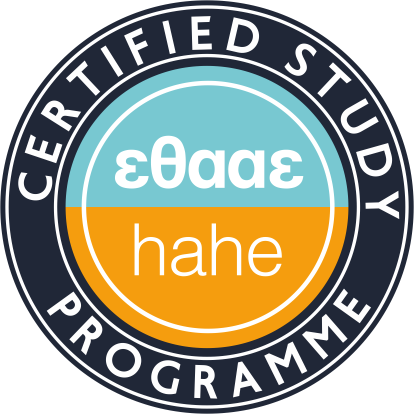Translation Technology
Teaching Staff: Sosoni Vilelmini, Gene Paraskevi
Course Code: YK-5001
Gram-Web Code: ΓΠ8010
Course Category: Specific Background
Course Type: Compulsory
Course Level: Undergraduate
Course Language: Greek
Semester: 5th΄
ECTS: 6
Total Hours: 3
Erasmus: Not Available
E Class Page: https://opencourses.ionio.gr/courses/DFLTI201/
IT skills are central to the translator's work, and the aim of this module is to demonstrate how the efficiency of the translation process and the translator's marketability can be improved by an enhanced knowledge of the relevant electronic tools. As well as receiving theoretical instruction, students will develop transferable skills through "hands-on" sessions that emphasise the "real world" translation environment. The main focus of the module will be on Computer-assisted tools (CAT-tools), including cloud-based tools and open-source tools (Trados, Memsource etc.). An introduction to Machine Translation (MT) (with an emphasis on Neural Machine Translation) and post-editing is also included in the module, as is familiarisation with MT systems’ evaluation.
Upon completion of the course, students will be able to:
- Use the most commonly used CAT tools (Trados Studio, Multiterm, Memsource, MateCat)
- create and manage translation memories
- create and manage termbases
- create electronic glossaries
- use MT during the pre-translation process
- align texts
- perform Quality Assurance (QA)
- pre-edit and post-edit MT output
- use automatic metrics to evaluate the quality of machine translation output
- manually evaluate machine translation output, accuracy/fluency evaluation, ranking, error analysis based on error typology models such as DQF / MQM
Week 1: Overview. Translation and Technology.
Week 2: The research ability of the translator, the stages of the translation process: analysis, synthesis and evaluation, research tools: dictionaries (printed and or electronic), glossaries, databases, parallel and comparable texts, informants. Term extraction and compilation of glossaries.
Week 3: Machine Translation (MT): Introduction to MT, a historical overview of MT systems and their training, translating for the training of an MT system, Statistical and Neural MT.
Week 4: Evaluation of machine translation systems. Automatic metrics, quality estimation, human evaluation, accuracy/fluency rating, ranking and error analysis.
Week 5: Pre-editing and post-editing of MT output: Introduction, techniques, frequent errors of fluency and adequacy. Post-editing of MT output: practical work.
Week 6: Post-editing of MT output: practical work and error analysis (MQM / DQF typology).
Week 7: Introduction to CAT tools, Trados Studio I: Ιnstallation, overview of the user interface, personal settings. SDL Multiterm: Basic concepts, using termbases, creating a termbase from scratch or by converting an existing file, adding entries to a termbase, extracting terms.
Week 8: Trados Studio ΙΙ: Translating a word document, auto-propagation, Context Match, Exact Match, Fuzzy Match, Tags, Concordance Search, Spell Check, QA.
Week 9: Trados Studio III: Translating different file formats (PDF, Εxcel, SRT, XML etc.). Shortcut keys.
Week 10: Τrados Studio IV: Translation memory management, text alignment, creating Autosuggest dictionaries.
Week 11: Memsource I: Memsource Desktop Editor και Mensource Web Editor. How to translate a document in Memsource.
Week 12: Memsource II: Translating different file formats (PDF, Εxcel, SRT, XML etc.). TM and TB management. Importing and exporting TMs and TBs. Text alignment.
Week 13: Other online CAT-tools. Recap session.
Main Textbook:
Moorkens, J., Castilho, S., Gaspari, F. and Doherty, S. (2018) Translation Quality Assessment: From Principles to Practice. Springer International.
Suggested Reading:
Bowker, L. (2002) Computer Aided Translation Technology: A Practical Introduction. Ottawa: Ottawa University Press.
Daelemans, W. & Hoste, V. (2009) “Evaluation of Translation Technology”, Linguistica Antverpiensia, 8/2009.
Doherty, S. (2016) “The Impact of Translation Technologies on the Process and Product of Translation”, International Journal of Communication 10, 947–969.
McDonough Dolmaya, J. (2012). “Analysing the crowdsourcing model and its impact on public perceptions of translation”, The Translator 18(2), 167–191.
McDonough Dolmaya, J (2011) “The ethics of crowdsourcing”. Minako O’Hagan (ed.) (2011) Translation as a social activity. A special issue of Linguistica Antverpiensia 10, 97–110.
Hartley, T. (2009) The Routledge Companion to Translation Studies. London: Routledge.
Heard, M. & Way, A. (2011) “Statistical machine Translation: A guide for Linguists and Translators”, Language and Linguistics Compass, 2011, 1–21.
O'Brien, Sharon (2012) “Translation and human-computer interaction”. Translation Spaces, 1 (1), 101-122.
Quah, K. C. (2006) Translation and Technology, New York: Palgrave Macmillan.
Somers, Harold (2003) Computers and Translation: A translator’s guide. Amsterdam/Philadelphia: John Benjamins.
Sprung, Robert (ed) (2000) Translating into Success: Cutting-edge strategies for going multilingual in a global age. American Translators Association Scholarly Monograph Series. Volume XI. Amsterdam/Philadelphia: John Benjamins.
Stasimioti, M., Sosoni, V. (2020) “Translation vs Post-editing of NMT Output: Measuring effort in the English-Greek language pair”. Proceeding of 1st Workshop on Post-Editing in Modern-Day Translation, AMTA 2020, 6 October 2020, Online Conference.
Stasimioti, M., Sosoni, V., Kermanidis, K.L., Mouratidis, D. (2020) Machine Translation Quality: A comparative evaluation of SMT, NMT and tailored-NMT outputs. Proceedings of the 22nd Annual Conference of the European Association for Machine Translation. Lisbon November 2020, 441-450.https://www.aclweb.org/anthology/2020.eamt-1.47.pdf.
Stasimioti, M & Sosoni, V (2019) MT output and post-editing effort: Insights from a comparative analysis of SMT and NMT output for the English to Greek language pair and implications for the training of post-editors. In C. Szabó & R. Besznyák (eds) (2019) Teaching Specialised Translation and Interpreting in a Digital Age - Fit-For-Market Technologies, Schemes and Initiatives. Wilmington: Vernon Press.
Stasimioti, M & Sosoni, V (2019) Undergraduate translation students’ performance and attitude vis-à-vis Machine Translation and Post-editing: Does training playing a role? Conference Proceedings Translating and the Computer 41, London 21-22 November 2019. https://www.asling.org/tc41/?page_id=2078.
Toral A, Sánchez-Cartagena VM (2017) A Multifaceted Evaluation of Neural versus Phrase Based Machine Translation for 9 Language Directions. In: Proceedings of the 15th Conference of the European Chapter of the Association for Computational Linguistics (EACL), Vol. 1, pp. 1063-1073.
Vieira LN, Alonso E, Bywood L (2019) Introduction: Post-editing in practice – Process, product and networks. Jostrans: The Journal of Specialised Translation, 31: 2-13.
The lesson has a hybrid lecture-workshop format. It is largely based on the interaction with students and classroom discussion. Hands-on-sessions focus on practical aspects of the issues covered and described during the lectures. Students have hands-on sessions on CAT-tools (Trados Studio, Multiterm, Memsource etc.). The class material is made available on the e-class platform.
Several ICT tools are used, mainly ppt presentations, online videos and Internet resources. Several CAT Tools are used, such as Trados, Memsource, MT systems and automatic evaluation metrics. The class material is made available on the Open e-class platform.
A final written assignment is used to assess the students.
Back
Undergraduate
Secretariat
Galinos Building (1st floor)
Corfu, GR-49132
Open to the public:
Mon, Wed, Fri: 11am - 1pm
Tue, Thu: 11am - 1pm (Erasmus+)
 E-Class Platform
E-Class Platform
 eSecretariat
eSecretariat
 Webmail
Webmail
 Learning Material Management
Learning Material Management
 Internship Portal
Internship Portal
 Library
Library





 Translation Technology
Translation Technology
